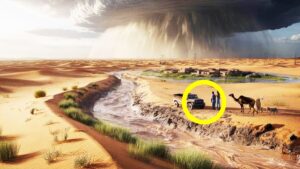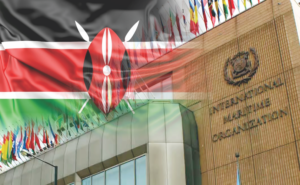Excess Rainfall in the Sahara could transform the Desert, Destabilize Africa and Redraw Africa’s Fault Lines: Study Reveals
A surge of rainfall across the Sahara Desert could transform vast stretches of Africa before the end of the century. Nonetheless, scientists warn that this flood from gushing rainfall, could bring as much risk as reward.
New research from the University of Illinois at Chicago, published in NPJ Climate and Atmospheric Science (2025), projects that parts of the Sahara could receive up to 75% more rainfall by 2100. The modelling, which combines forty global climate simulations with half a century of satellite and ground data, points to a dramatic shift in how, when and where rain falls across the continent. This is not simply a green Sahara revival. It is a reshaping of the African monsoon, with consequences that could touch everything from agriculture and migration to urban planning and regional diplomacy. Watching for the science behind the storms.
![]()

The models reveal two driving forces; a warmer air, which can hold more moisture and a northward drift of the Hadley circulation, known as the vast atmospheric engine that moves tropical rain belts. As oceans in both the Atlantic and Indian basins heat up, moist air is pushed extensively into the Sahara, triggering more intense convective storms rather than gentle seasonal rains. By the late century, much of central and southern Africa is also expected to grow wetter by between 17% and 25%. While the far southwest could dry slightly. As this is a continental reshuffle of rainfall, and not every region wins. A situation where more rain means more trouble.
A wetter Sahara might sound like relief for a parched land, but climate scientists urge caution. Desert soils are hard and compacted when they repel rather than absorb water. Sudden downpours could unleash flash floods, eroding fragile land and washing away infrastructure in villages and cities alike. With regards to millions of residents living along the Sahel, the shifting rains could destabilize livelihoods that finely tuned to seasonal rhythms. Farmers depend on predictable monsoon onsets, for planting sorghum and millet. Even a two-week delay of rain, then later paired with heavier rainfall and more erratic storms, can devastate harvests.
![]()

Meanwhile, most pastoralists may see new grazing zones emerge, but also face unpredictable water holes and outbreaks of pests like locusts. In this stead, the amount of rain does not matter much. It is how the rain is characterized in fast arrival, fierce and uneven. Which in most cases grant with ease an urban and economic strain.
African cities are already under pressure from rapid growth, facing mounting climate stress. Drainage systems in capitals like Lagos, Niamey, Khartoum, etc., are designed for yesterday’s storms, not tomorrow’s cloudbursts. Insurance markets remain thin and rebuilding after floods often drains public budgets.
Hydropower projects could see higher energy yields in wetter zones, but also greater volatility. Rivers that swell beyond design limits may threaten dams and downstream settlements. The business of water, from agriculture to utilities, may need an overhauling with extreme guided directions.
More water can also mean more tension, considering politics in the raining gush. Transboundary rivers and dams, such as the Niger and Nile, Grand Ethiopian Renaissance Dam (GERD) with the tension surmounting on neighboring countries as Egypt and Sudan, etc., cross fragile political borders. Stronger floods upstream could test treaties downstream, challenging already delicate regional cooperation. Governments will need to renegotiate water-sharing rules for a climate that refuses to stay constant.
![]()

Internationally, the shift could ripple outward. A wetter Sahara might mean less dust blowing into the Atlantic, which can result in a subtle change that could alter hurricane patterns and even affect rainfall in the Americas and Europe. Africa’s changing skies, in other words, could become everyone’s problem. Adapting to a new normal would be an utmost relieve.
Researchers call for practical adaptation now, such as improved flood warning systems, drought-resilient seeds plantation, redesigned drainage and roads; and regional coordination on shared rivers. Simple soil works like contour bunds and sand dams, can trap rainfall before it runs off, storing water underground for dry seasons. This change will culturally reshape lives too. Rural communities that have long migrated in search of water may find new oases, or new water confluence point. The story of the Sahara rainfall has always been one of a movement. The climate might start dictating where people would move next. And at the moment, there is a delicate balance.
The prospect of a greener Sahara captures the imagination. But as the study warns, greening does not mean stabilisation. A desert in flood-flux from gushing rain, could redraw Africa’s ecological and political map. Putting a critical test to governments, economies and cultures built on older climate certainties.
More rain is coming. The question is whether the continent and the world can turn that storm into strength.






